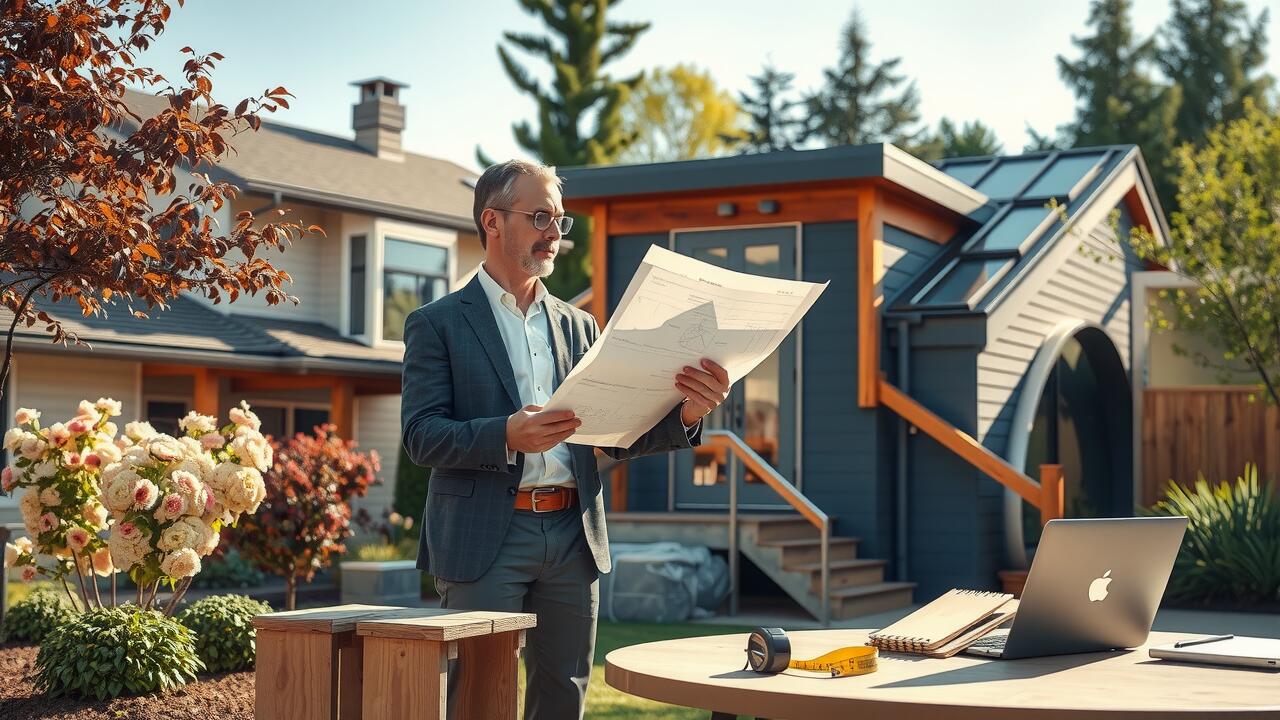
Table Of Contents
Design and Aesthetic Guidelines
When considering the design and aesthetic guidelines for an accessory dwelling unit (ADU), it’s essential to ensure that the structure complements the existing architecture of the primary residence. An ADU in Pardee, Santa Clarita, should reflect the local character and contribute to the neighborhood’s overall aesthetics. Consistency in materials, colors, and rooflines can create a harmonious appearance. Additionally, landscaping around the ADU can enhance its integration within the surrounding environment, making it feel like a natural extension of the property.
Functionality and livability are also important aspects of design for an ADU. Thoughtful layout and sufficient natural light can greatly enhance the unit’s appeal and comfort. Outdoor spaces, such as patios or small gardens, can provide residents with private areas for relaxation. In Pardee, Santa Clarita, where climatic conditions vary, considering design features that maximize energy efficiency and sustainability can contribute to the project’s long-term viability while respecting local aesthetic expectations.
Ensuring Compatibility with Existing Structures
When considering an ADU in Saugus, Santa Clarita, it’s essential to ensure that the new construction harmonizes with the existing home and neighborhood. Factors such as architectural style, building materials, and overall scale play a crucial role in maintaining visual coherence. Features like rooflines, window placements, and landscaping choices should align with neighboring properties to foster a sense of unity. This approach not only enhances curb appeal but also supports local community aesthetics.
Residents planning an ADU in Saugus, Santa Clarita, should also take local zoning laws and design guidelines into account. Many municipalities have specific requirements for setbacks, height limits, and even color palettes to ensure that new builds respect the character of the area. Engaging with local planning authorities early in the process can provide valuable insights into these regulations. This proactive step helps avoid potential pitfalls and ensures that the new ADU complements both the homeowner’s vision and the surrounding environment.
Permitting Process for ADUs
Navigating the permitting process for an Accessory Dwelling Unit (ADU) in Pardee, Santa Clarita, involves several key steps that homeowners should be aware of. Initially, property owners must determine whether their specific lot meets the necessary zoning requirements for an ADU. This may include verifying existing property setbacks, height restrictions, and density standards. Inquire with the local planning department to obtain clear guidelines tailored to the area.
After confirming that the property is eligible, the next step is to prepare and submit the required documentation. This typically includes design plans, site layouts, and documentation demonstrating compliance with local building codes. Local jurisdictions may also mandate public notices or hearings, providing an opportunity for neighbors to express concerns or support. Staying organized and maintaining open communication with city officials can streamline the approval process for an ADU in Pardee, Santa Clarita.
Steps to Obtain Necessary Permits
The process of obtaining the necessary permits for constructing an ADU in Mint Canyon, Santa Clarita, begins with understanding local regulations. Homeowners must review the specific zoning regulations that apply to their property. This includes height restrictions, setbacks, and other site-specific requirements. Engaging with the local planning department can determine whether your proposed plans for an ADU meet these criteria.
Once you’re familiar with the regulations, the next step is to gather all required documentation. This typically includes site plans, architectural drawings, and any other supporting materials that showcase compliance with local codes. After assembling these documents, submit your application to the appropriate agency. Be prepared for potential revisions based on feedback from planning officials, as ensuring all requirements are met enhances the chances of a smooth approval process.
Financing Your ADU Project
Financing an Accessory Dwelling Unit (ADU) project requires careful planning and consideration of available options. Homeowners can explore various avenues, including traditional bank loans, home equity lines of credit, and specialized financing programs tailored for ADUs. Each option comes with its benefits and drawbacks. Home equity loans, for instance, allow homeowners to leverage existing property value, making them an attractive choice for those looking to fund an ADU in Pardee, Santa Clarita.
Additionally, numerous state and local incentives promote the construction of ADUs to address housing shortages. Financial assistance such as grants or tax credits may help offset costs associated with building an ADU. Homeowners should research eligibility requirements for these programs, as they can significantly ease the financial burden of their projects. By evaluating both traditional and innovative financing avenues, prospective builders can approach their ADU project with confidence.
Exploring Funding Options and Incentives
When considering the financial aspects of building an ADU in Rancho Santa Clarita, Santa Clarita, it’s crucial to explore various funding options available to homeowners. Traditional bank loans are a common choice, but there are also specific lending programs designed for ADUs that may offer more favorable terms. Local credit unions and community banks often provide tailored loans for these types of projects, making them a viable option for many.
In addition to loans, there are several incentive programs at both state and local levels. California has implemented various grants and tax incentives to encourage the development of ADUs. Homeowners in Rancho Santa Clarita can benefit from these programs, which aim to reduce the overall cost of construction. Researching these incentives can help make the financial feasibility of an ADU more attainable for interested homeowners.
FAQS
What is an ADU?
An ADU, or Accessory Dwelling Unit, is a secondary housing unit built on a residential property that can be used for a variety of purposes, such as guest accommodation, rental income, or housing for family members.
Can I build an ADU in my front yard in California?
In most cases, California regulations do not typically allow ADUs to be placed in the front yard. However, local zoning laws may vary, so it is essential to check with your city or county for specific regulations.
What design guidelines should I consider for my ADU?
When designing your ADU, you should consider aesthetic guidelines that ensure compatibility with existing structures, such as architectural style, materials, and landscaping, to maintain the neighborhood’s overall appearance.
What is the permitting process to build an ADU?
The permitting process for an ADU generally involves submitting an application to your local planning department, including plans and documentation that meet zoning and building codes. The specific steps may vary by jurisdiction.
Are there any financing options available for building an ADU in California?
Yes, there are several financing options for ADU projects in California, including home equity loans, personal loans, and state-sponsored incentives that may help cover part of the construction costs.


